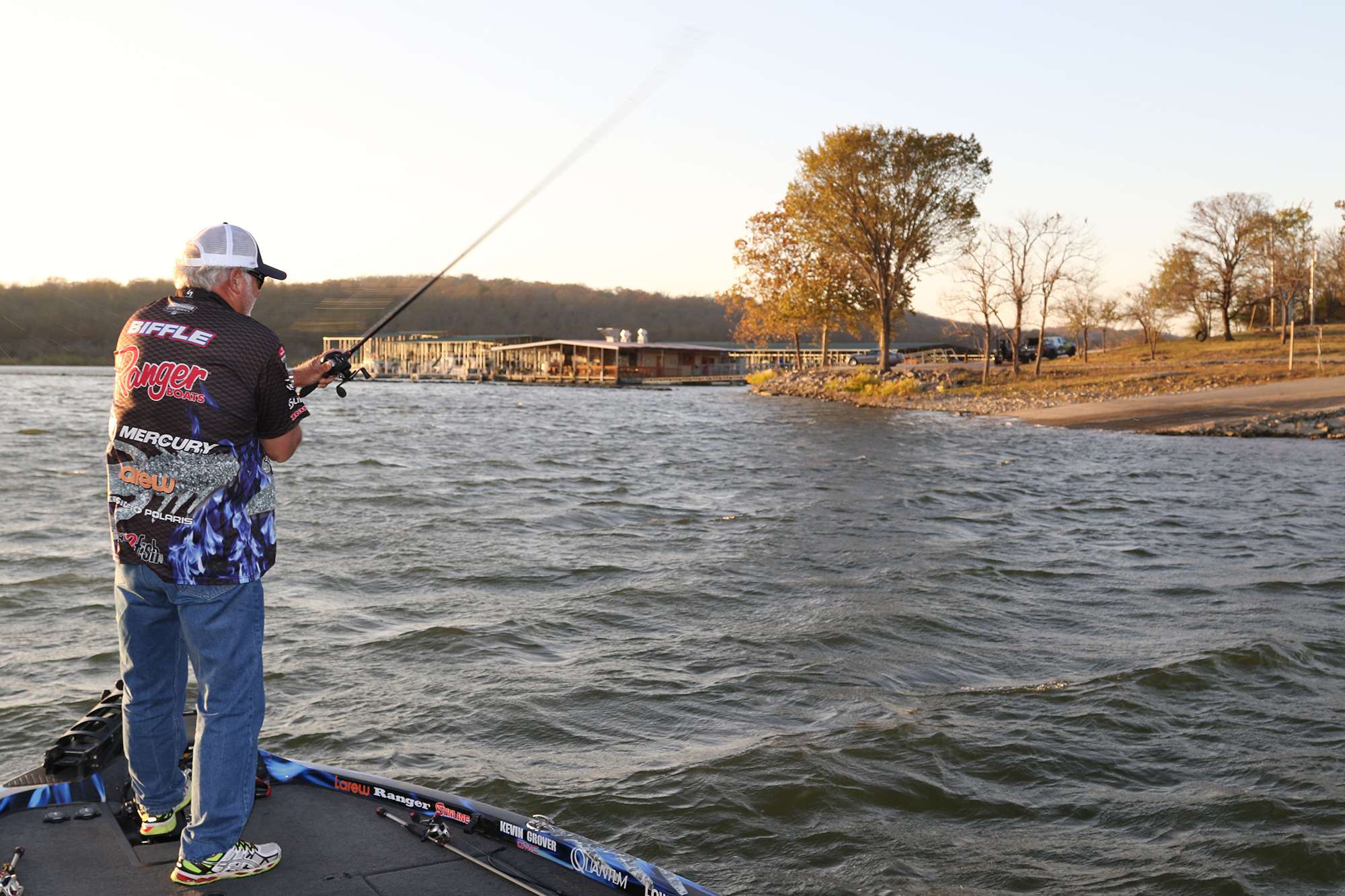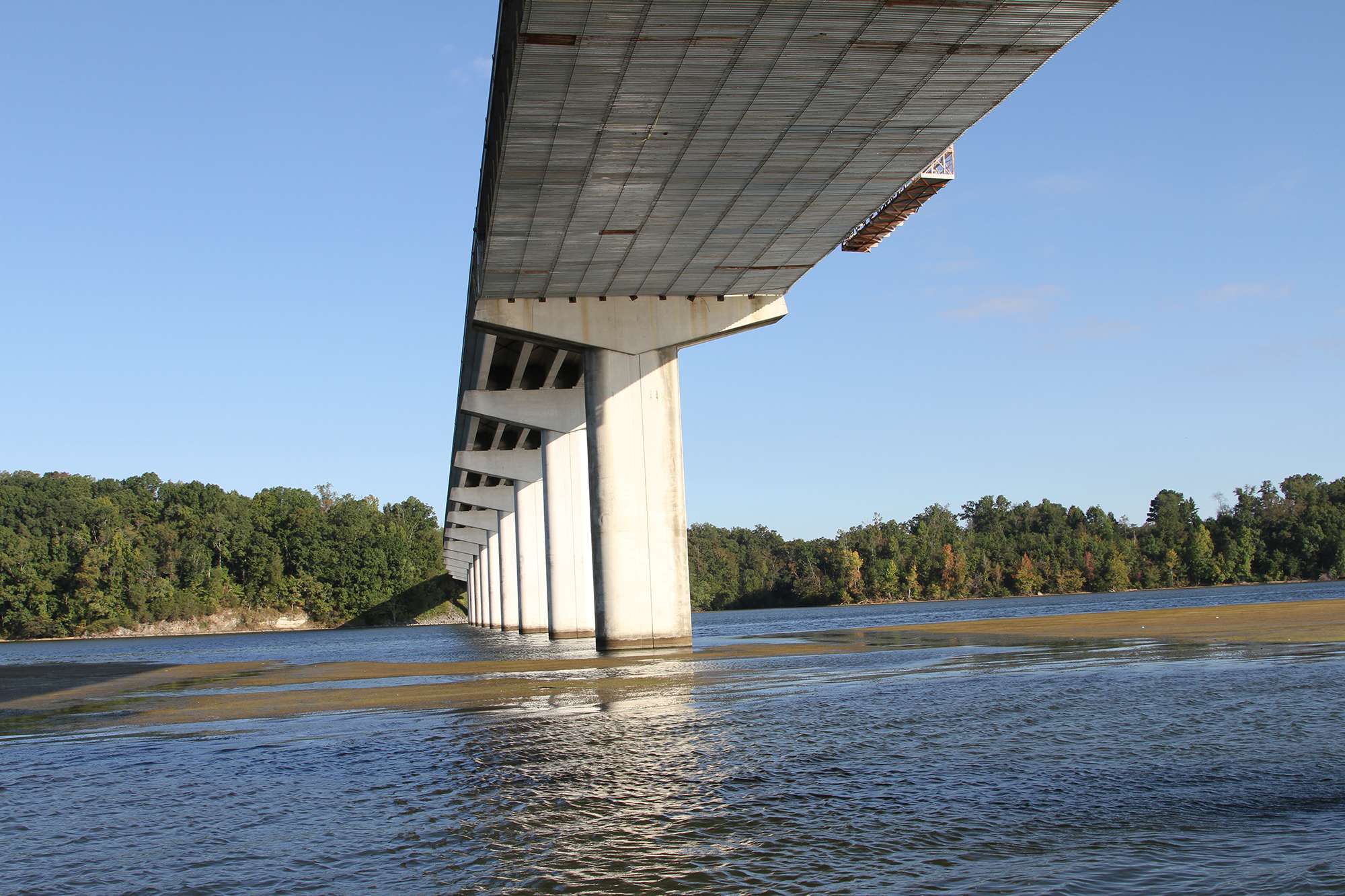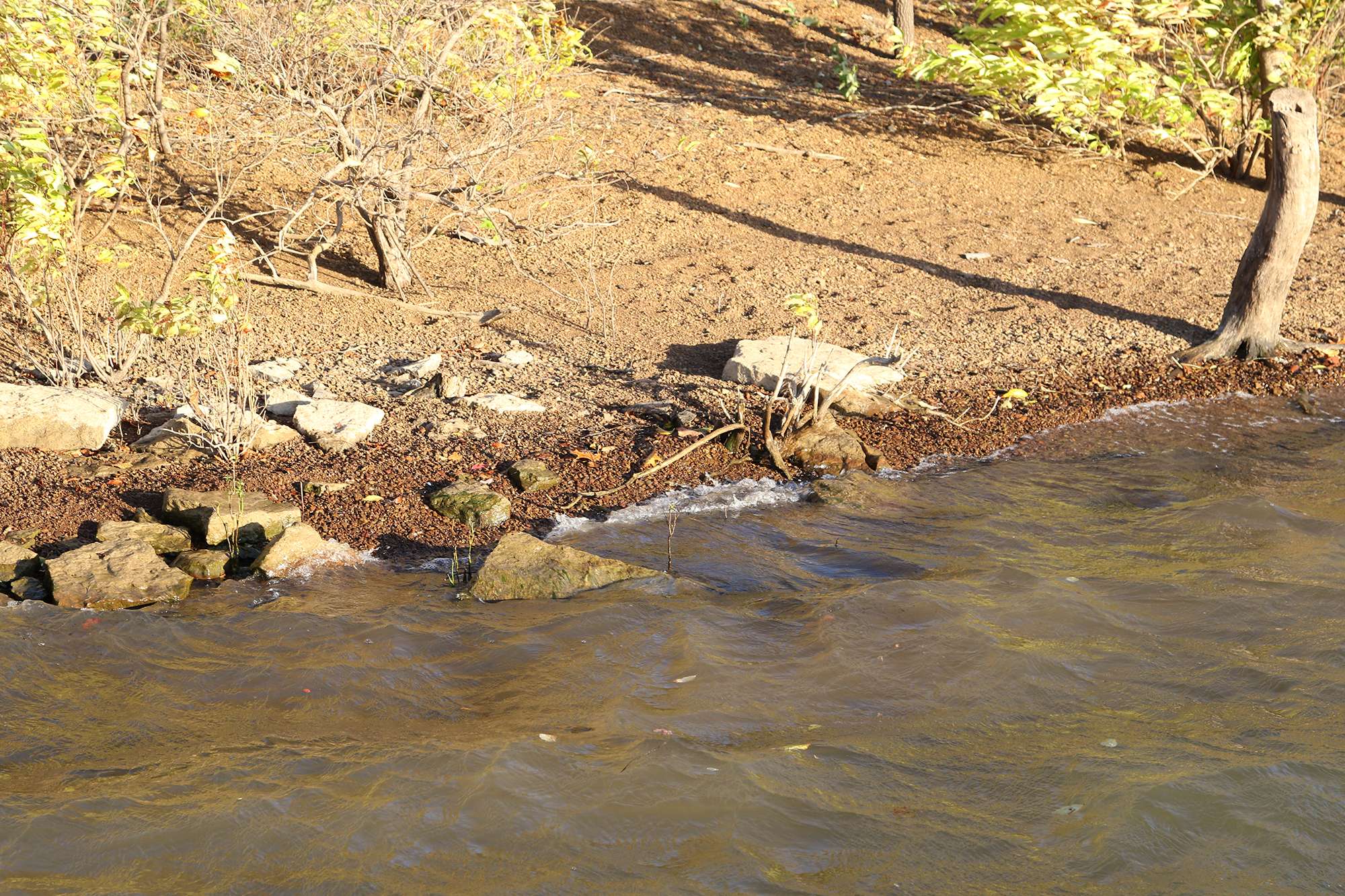
Change is good, they say, but that’s more than mere motivational mutterings; for a bass angler, transition areas often hold the juice. We’ll look at four to five examples of where one habitat feature meets another and how pros leverage these specific areas of opportunity with situation-specific baits and tactics.
We’re all pretty dialed into the concept of transitional banks, where the blending of big rock to chunk rock and chunk to gravel points toward a prespawn progression zone. Also, a rock vein punctuating an otherwise nondescript bank should certainly clue us into good things below the surface.
But how about some of the less obvious stuff? What tactical suggestions can we glean from visible, if not inconspicuous, habitat elements?
Consider this roundup from some of the Elite Series’ top tacticians.
Murky matters
Mud lines can bring opportunity, as fish utilize the light/dark boundary to their advantage, but Western stick Jared Lintner has a killer pattern that he says often goes completely overlooked.
“In West Coast fisheries like Clear, Shasta, Don Pedro, all the big lakes have these huge rock formations and you can catch them off these big rock areas, but it seems that you can catch them better where you can find mud meeting that rock,” he says. “I really think they use it as an ambush point; they sit in the rocks and feed on whatever comes by the mud. That’s mostly crawfish, but it might also be bluegill and tule perch.
“It’s weird, you’re not fishing the mud, you’re fishing the seam where the mud often has grass growing adjacent to the rock. A lot of guys will fish the rock, but they’ll stop fishing at the mud. If I’m driving down the lake and I see that happening, it’s almost a guaranteed fish.”
Most spots in which this scenario occurs find red clay banks indicating what’s under the adjacent water. Moreover, Lintner says a steady wind often blows a mud line that may or may not interest the fish, but will certainly point out the opportunity.
Lintner says a jig with a craw trailer is his go-to mud seam bait, but he’ll also mix in a Texas-rigged worm and a shallow running crankbait.

Shady character
A buddy tells you he’s fishing a bridge and, in most cases, it’s a 50-50 call that he’s either running the pilings or buzzing down the riprap. If that buddy’s John Murray, you can add a third element — the shadow line.
“The upper deck of the bridge creates a wide band 10-20 feet of solid shade away from the bridge,” Murray said. “You can always find those bass relating to that shade. Basically, they’re sitting there in that shade and looking out into the sunshine. Basically, it’s cover for them.
“As that shade moves throughout the day, the fish just move with it. That’s a really good pattern for lakes that have shad and groups of schooling bass. Almost nobody fishes that. They’ll fish the pilings, but they won’t fish that shade that’s separated from them.”
Noting that bridge shade lines excel during the summer-fall months, Murray says he’ll first attack this deal with a topwater like the River2Sea Whopper Plopper. With the fish typically positioned to look up and ambush, he’ll cast into the sun and bring the bait into the shade.
If the fish don’t want to rise, Murray will snoop around to find where the baitfish are holding and select a crankbait that’ll trace the appropriate depth. If this comes up empty, he’ll show ‘em a finesse look by swimming a dropshot with a Gene Larew Tattle Tail worm, a grub or a curly tail.
“You’re trying to get something into that zone where no one has probably ever fished,” Murray says. “I grew up with the Charlie Brewer Slider Rig; just a 4-inch worm, you threw it out, counted it down to 8-10 feet and swam it in. It was just subtle; it wasn’t in the fish’s face like a crankbait.
“To me, swimming a dropshot does the same thing, only I can control it a little better. It’s just a presentation that no one’s doing.”
Great in the grains
From Lake Mead to Chickamauga, one of Murray’s favorite little sneaky scenarios is a transition from rock to sand. Particularly relevant in the fall, he watches his graph for these often isolated sections because of their propensity for weed growth.
“At Lake Mead where I grew up, we ran sand the whole day,” Murray said. “There wasn’t a lot of it, but when you found it, there was a little bit of weeds 3-8 inches tall and those bass were around it.
“You can have big, beautiful boulders around and you can’t get a bite, but if you have a little sandy beach over here, you can catch them all day long. It doesn’t look like typical bass habitat and it’s not unless that weed growth is right.”
Murray’s bait mix starts with a topwater because the surface display pulls fish to him. Next step is a dropshot with a Gene Larew Tattle Tail worm — Texas rigged for smooth operation in the weeds. If the fish need something between the topwater and the finesse rig, he’ll throw a bladed swim jig with a trailer matched to local forage.
Notably, Elite pro Seth Feider finds sand breaks on the Upper Mississippi River a prime scenario for opportunistic bass chowing on whatever hapless prey washes out from a side channel and into the main river. A Storm Chug Bug is his top tool for running breaks and covering water. Aggressive smallies won’t hesitate to blast the topwater, so it’s usually and ease yes/no deal.
The tuck under
Offshore, pro Russ Lane eyeballs his Garmin unit to locate what he calls “rollovers” — spots transitioning from sand to gravel to rock and then breaking off the back side.
“That gravel-to-rock transition will change the flow of the water and the fish will use that change to get in the slack spot,” Lane said. “When the current flows toward this spot, it forces the water up and the fish will hid in the calmer part under the heavy current.”
This is usually a good cranking scenario with a Spro Fat Papa 70 Lane’s choice for spots 15 feet or less. In deeper deals, he’ll slow roll a 4 1/2-inch Big Bite Baits BB Kicker Swimbait on a 3/4-ounce Buckeye Lures J-Will Swimbait head.
On the edge
“Boat ramps usually have some rubble from where they built it or some concrete spilled over and that’s a great spot,” Lane said. “I call them one-cast places because it’s a precise place; you know exactly where to cast. You’re not going to cast far to the left or far to the right. You know exactly where that fish should be sitting.”






